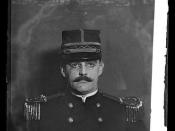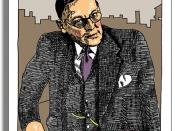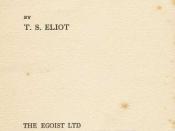Thomas Stearns Eliot
Modernist Anglo - American poet, dramatist, literary critic
(1888 - 1965)
He was born in St. Louis in 1888 to a family with prominent New England roots.
He studied at Harvard, in 1906, was accepted into the literary circles, where he favoured 16th- and 17th-century poetry, the Italian Renaissance (particularly Dante), Eastern religion, and philosophy. The greatest influence on him was the 19th-century French Symbolists such as Charles Baudelaire, Arthur Rimbaud, Stephene Mallarme, and Eliot's favourite, Jules Laforgue.
From 1911 he studied at the Sorbonne, and in Oxford, in 1914 he established residence in London and in 1927 became a British citizen.
After working as a teacher and a bank clerk he began a publishing career; he was assistant editor of the Egoist (1917-19) and edited his own quarterly, the Criterion (1922-39).
In 1925 he was employed by the publishing house of Faber and Faber, eventually becoming one of its directors.
In 1915 he married British writer Vivienne Haigh-Wood (they would divorce in 1933), a woman prone to poor physical and mental health, and in November of 1921, Eliot had a nervous breakdown.
By this time Eliot had already achieved great success in 1917 with his first book of poems, Prufrock and Other Observations.
Eliot gained the admiration and aid of a contemporary poet Ezra Pound, the other tower of Modernist poetry. During Eliot's recovery from his breakdown in a Swiss sanatorium, he wrote "The Waste Land."
A couple of months later he gave Pound the manuscript in Paris. Thanks to Pound's heavy editing, as well as suggestions. The Waste Land, were published in 1922, defined Modernist poetry and became possibly the most influential poem of the century.
The Waste Land
Devoid of a single speaker's voice;
the poem ceaselessly shifts its tone, form, languages;
numerous allusive...


